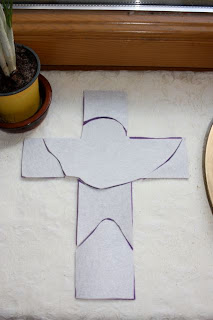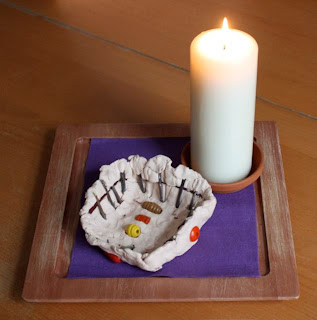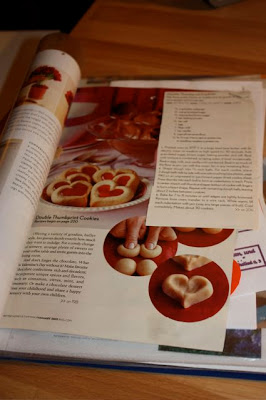Although my husband and I were both raised in the church, our family started observing Lent together only about three years ago, and we are still growing in our understanding of what it is all about. We became aware that identifying with the poor is an important aspect of Lent and this year we wanted to stretch ourselves a little more in that area.
Inspired by the book below which was written by an old college friend of my husband's, we began to think about how we might help our kids (and us!) become more aware and inclined to do something about the problem of poverty in our world.
Part of Lent is connecting with God's thoughts and heart in prayer first and then taking action. How could we as a family connect with God's compassion for the poor? My husband came up with a plan to pray for a specific part of the world each week of Lent and try to find meals from those areas, especially ones that poor people would eat. Although I thought his idea was brilliant, I was a bit concerned that the kids would get burned out if we ate bland meals everyday. In talking it over with my dear friend and mentor, Lyn, she helped hone our ideas into something pedagogically appropriate for our kids' ages.
When I mentioned that we sponsored two children with World Vision, Lyn suggested that on Sundays, our feast days (where we are free from fasting), we should have an expensive meal from whatever part of the world we are praying for. Then, on Monday evening, we would eat the poor person's meal. Next, we calculate the costs of both meal and the money saved on the poor person's meal would then be collected to give as an extra gift to the children that we sponsor.
This week, we begin with a continent close to our hearts, Africa. Last night, we ate "Djaba Dji", a chicken and vegetable stew from Mali. (This is a recipe from one of our all-time favorite books, I Lost my Tooth in Africa.) Afterwards, we talked about specific people that we know in Africa and what we could pray for them. My children then prayed some really touching prayers. My daughter, who usually doesn't like to pray out loud, surprised me by praying very thoughtful things for her friends Fiona and Rebecca, who live in Uganda. My son prayed, "Lord, please make me a super hero when I grow up so that I can help the poor." In my book, he's already a super hero! But just in case you think he's a saint, this is the same kid that burst into tears on Ash Wednesday because he already missed meat.: )
Tonight, we ate plain polenta (to mimic "pap", the corn mush eaten in many African countries) and beans (our staple on our trip to Uganda). Although the kids were less than thrilled with it, they ate it and understood why we were eating it. We then calculated that there was a 10 Euro difference in the meal, so we put that amount in the jar for the children we sponsor.
And then we prayed for children in Africa to have good medical care. To avoid this being too abstract, I explained that many African children didn't have a "Frau Dr. Märker", my kids' beloved pediatrician. I also used an example of a time they were both really sick to ask what would have happened if we had had no medicine.
Inspired by the book below which was written by an old college friend of my husband's, we began to think about how we might help our kids (and us!) become more aware and inclined to do something about the problem of poverty in our world.
Part of Lent is connecting with God's thoughts and heart in prayer first and then taking action. How could we as a family connect with God's compassion for the poor? My husband came up with a plan to pray for a specific part of the world each week of Lent and try to find meals from those areas, especially ones that poor people would eat. Although I thought his idea was brilliant, I was a bit concerned that the kids would get burned out if we ate bland meals everyday. In talking it over with my dear friend and mentor, Lyn, she helped hone our ideas into something pedagogically appropriate for our kids' ages.
When I mentioned that we sponsored two children with World Vision, Lyn suggested that on Sundays, our feast days (where we are free from fasting), we should have an expensive meal from whatever part of the world we are praying for. Then, on Monday evening, we would eat the poor person's meal. Next, we calculate the costs of both meal and the money saved on the poor person's meal would then be collected to give as an extra gift to the children that we sponsor.
The jar with pictures of the two children we sponsor through World Vision, where we will collect the monetary gift for them. |
This week, we begin with a continent close to our hearts, Africa. Last night, we ate "Djaba Dji", a chicken and vegetable stew from Mali. (This is a recipe from one of our all-time favorite books, I Lost my Tooth in Africa.) Afterwards, we talked about specific people that we know in Africa and what we could pray for them. My children then prayed some really touching prayers. My daughter, who usually doesn't like to pray out loud, surprised me by praying very thoughtful things for her friends Fiona and Rebecca, who live in Uganda. My son prayed, "Lord, please make me a super hero when I grow up so that I can help the poor." In my book, he's already a super hero! But just in case you think he's a saint, this is the same kid that burst into tears on Ash Wednesday because he already missed meat.: )
Tonight, we ate plain polenta (to mimic "pap", the corn mush eaten in many African countries) and beans (our staple on our trip to Uganda). Although the kids were less than thrilled with it, they ate it and understood why we were eating it. We then calculated that there was a 10 Euro difference in the meal, so we put that amount in the jar for the children we sponsor.
And then we prayed for children in Africa to have good medical care. To avoid this being too abstract, I explained that many African children didn't have a "Frau Dr. Märker", my kids' beloved pediatrician. I also used an example of a time they were both really sick to ask what would have happened if we had had no medicine.
An inspiring passage from Isaiah 58 says:
"Is this not the kind of fasting I have chosen:
to loose the chains of injustice
and untie the cords of the yoke,
to set the oppressed free
and break every yoke?"
Is it not to share your food with the hungry
and to provide the poor wanderer with shelter -
when you see the naked to clothe him,
and not to turn away from your own flesh and blood?
Then your light will break forth like the dawn
and your healing will quickly appear;
then your righteousness will go before you,
and the glory of the Lord will be your rear guard."
Though fasting is difficult, I am motivated to do it when I hear God saying that he will loosen the chains of injustice and untie the cords of oppression. And I hope that my children will grow up understanding why we fast at Lent instead of dreading it!
This post was written as a part of the Celebrating Lent Link-Up from this blog, Explore and Express, and Wonderful in an Easter Kind of Way!
and Catholic Icing







































